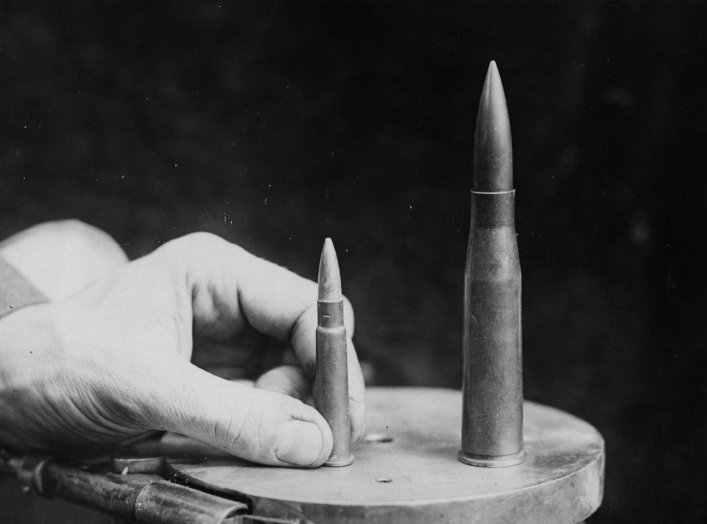
The tank made its battlefield debut in 1916 with the British army, and later with the French Army. Though early tank models were slow and cumbersome, steady improvements to their designs resulted in higher speed, thicker armor, and better firepower. Though anti-tank mines were effective against armor, it was difficult to guess with any accuracy where tanks would attempt to cross. Artillery was also a potential solution, though they could not always be zeroed onto tanks quickly enough. Bullets were one potential solution to Germany’s tank problem.
The standard German rifle cartridge in both the First and Second World Wars was the 7.92 millimeter Mauser round. It was quickly realized by the Germans that despite this round’s formidable stopping power, it didn’t stand a chance against British tanks. Germany began fielding the armor-piercing K round, or K bullet to troops for use against armored targets.
The round in question, depending on the variant, had either a steel or tungsten carbide core rather than soft lead, which easily deforms on impact with an armored target. But, as British armor improved, the round became less and less effective. It became evident that against late-model British tanks, the K round was completely impotent. Something bigger, with better penetration was needed. Germany looked to hunters for the answer.
Elephant Gun
One possible solution had African roots. The continent is home to the so-called “Big-Five.” These are some of the most dangerous animals one can hunt—elephants, lions, leopard, rhinoceros, and Cape Buffalo. Like a tank, taking one of the Big Five down is no easy feat—and like a tank, requires a large-caliber round.
Drawing on lessons learned from big-bore hunting cartridges, the German Army developed the large 13.2mm TuF round, German for Tank und Flieger, or Tank and Aircraft. This bottlenecked and semi-rimmed cartridge was big—bigger even that the .50 BMG round of later World War Two fame. Since the cartridge was designed to harass or disable British tanks, it came with a hardened steel core. A large cartridge requires a large guns, and the platform designed by the German firm Mauser was not light-weight.
Unloaded, the Mauser T-Gewehr was a heavy 35 pounds. Loaded, the rifle’s weight jumped to 40+ pounds, and was operable essentially just from the prone position. The long rifle came equipped with a bipod that attached to the barrel near the middle, and helped provide a solid, stable platform from which to fire. Using iron sights, the two-man shooter and ammunition bearer team could engage targets up to around 500 meters, or a little over 1,600 feet. The rifle used a bolt-action single shot system, and had an innovative pistol grip just rear of the trigger.
Shooting the T-Gewehr was likely very painful. The rifle lacked a muzzle brake or butt pad to reduce recoil. Shooting was probably done by both the ammunition bearer and main gunner to not overly fatigue either shooter.
Postscript
Germany built over 15,000 of the T-Gewehr. Though the design was undeniably powerful, it suffered from poor mobility. Shooter comfort was also likely a serious issue. In any case, the T-Gewehr’s utility lessened near the end of the Great War with the introduction of thicker tank armor that was imperious to its large rounds—good news for T-Gewehr crews!


No comments:
Post a Comment